Posts Tagged ‘catering’
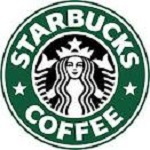
Value network analysis can be applied in relation to Starbucks operations in the UK in order to “explore the structure of its interaction with several actors in a network of relationships” (Zsidisin and Ritchie, 2008, p.40). In simple terms, value network analysis can be specified as more sophisticated version of Porter’s Value Chain analysis in a way that the former framework explains the impact of each network group in a multidirectional manner. For example, as it is illustrated in the following figure, media as an important network group within Starbucks value network has direct implications on the performance of three other individual network groups: suppliers, company operated stores, and licensed stores. This specific interrelationship can not be effectively presented within Porter’s value chain network, due to the fact that this framework is constructed in a rigid and sequential manner. The following table briefly explains the nature of impact each individual network group within Starbucks value network Network group Comments Company operated stores The largest source of revenues from the sale of drink and food products Licensed stores Licensed stores contributed to 9% of total revenues during the financial year of 2011 (Annual Report, 2011). Suppliers This network group comprises suppliers of coffee beans, food products, and various tools and technologies.Suppliers are used by Starbucks for company operated stores, whereas, licensed stores deal with their suppliers in a direct manner. Farmer Support Centres are maintained in Rwanda, Costa Rica and other locations UK Government agencies UK government agencies as an independent network group can impact both, company operated stores, as well as, licensed stores Media Has great impact on the performance of both, company operated and licensed stores. Recently, this impact has been highly negative due to extensive coverage of tax issues from a critical viewpoint.Unlike other network groups, media…
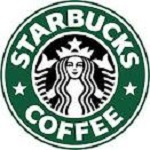
Critical success factors (CSF) can be explained as “an element of the organisational activity which is central to its future success” (Botten, 2009, p.20). The following table presents explanation of Starbucks Critical Success Factors in the UK market: CSF Explanation Quality of products Increasing level of competition in the market is fuelling the level of customer expectations regarding the quality in general, and freshness in particular Customer services Excellent customer services are being adopted as an important source of competitive edge by increasing numbers of coffee shops Shop design Coffee shops in the UK are being positioned as a ‘third place’, where people can spend most of their time apart from workplace and home (Dolan, 2012).Accordingly, relevant atmosphere needs to be developed with the interior, music and design. Social responsibility The impact of corporate social responsibility on profitability has increased significantly in the past several years. Accordingly, the level of engagement in fair trade, recycling policies, carbon emission policies, and employee treatment can be specified as important success factors for branded coffee shops like Starbucks Customer loyalty reward programs In catering industry consumer behaviour is greatly impacted by the level of attractiveness of loyalty programs that offer discounts and other advantages to loyal customers Starbucks Corporation Report uploaded on April 2017 contains the application of the major analytical strategic frameworks in business studies such as SWOT, PESTEL, Porter’s Five Forces, Value Chain analysis and McKinsey 7S Model on Starbucks. Moreover, the report contains analyses of Starbucks’s business strategy, leadership and organizational structure and its marketing strategy. The report also discusses the issues of corporate social responsibility. References Botten, N., 2009. Enterprise Strategy, Elsevier
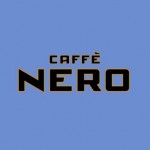
The following table illustrates Caffe Nero SWOT Analysis: strengths High profitability Rapid growth Big market share Number of outlets Using brand name to sell own branded products Strong brand name Geographical locations Partnerships with other big brands Weaknesses Not adoptability in case of change Dependence on one supplier Majority of the outlets are located only in UK, therefore risk is not well spread Opportunities Internet café Product diversification Further 400-450 new stores until 2015 Future expansion plans Threats Starbucks with 15000 outlets Currency exchange rates Bargaining power of supplier Rising pressures from pressure groups for fairer prices for suppliers(fair trade) Exposed to price rises in coffee Future changes in trend, if customers may change from coffee culture to tea or something else
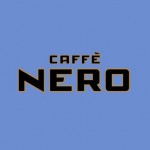
Caffe Nero PEST Analysis. A macro-environment represents those factors and forces over which the organization has least control. They are the forces and factors which give rise to perhaps the greatest opportunities and threats facing organizations. For example, Globalization means that there is always the threat of substitute products and new entrants. The wider environment is also ever changing, and the marketer needs to compensate for changes in culture, politics, economics and technology. Economic Factors As a member of the Marketing Department in Caffe Nero, one has to understand the effects of the many economic variables that are likely to affect the business operations of the company. These factors are almost out of the company’s control, therefore, the company must prepare to change with those changes in order to survive and grow in the future. The likely factors that may affect Caffe Nero are the inflation rates, income expenditure of the population where the company operates, exchange rates that affects the coffee prices as the coffee is supplied from abroad. In case of Caffe Nero, as long as its majority of the operations are in theUnited Kingdom, it is not hugely vulnerable to inflation rates as theUKeconomy tends to be more reliable than most other countries. However, the interest rate fluctuations that is putting pound sterling much lower than the previous US Dollar exchange rates is most likely to affect Caffe Nero as most of the suppliers are willing to accept the US Dollar. Therefore, the cost of the coffee is significantly higher than before. Political Factors Operations of the company are most likely affected by the changes in the laws within which the business operates. The relationship between the country the company operates in and its supplier is also determinant of the possible future business deals and activities…
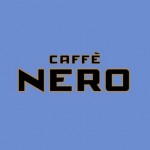
Due to the rapid growth in coffee sector in United Kingdom which was triggered by a trend in social culture and a growth in household expenditure boosted the growth of Caffe Nero which has opened its branches in over 135 cities and 300 branches all over the world. Caffe Nero, based on Italian brand has been successful on capturing the larger share of market slice both in UK and other European countries despite of a intensified competition. However, it has the risk of going head to head with other coffee giants which is a threat to the company. Strengths of the company which helped to capture a huge share of the market from its competitors which resulted in: Profits nearly doubled by the year end (2008) About 8% growth on sales on certain months on consistent basis Market share nearly tripled over 2 years Environmental analysis for Caffe Nero Marketing oriented firm places the customer and satisfaction of the customers’ needs and wants, at the centre of all corporate thinking. He further mentions that a marketing oriented firm identifies the needs and wants of the customer and produce the goods to satisfy them rather than producing first and offering it to customers later. Although the needs and wants of the customers are clear and understandable, it is not always possible to achieve the desired results as there are other factors which affect the decision made by the company and they are known as environmental factors which are micro and macro environmental considerations. Micro-environmental factors Micro-environment is the forces close to the company that affect its ability to serve its customers-the company, market channel firms, customer markets, competitors and publics. Here are the actors in the micro-environment: The company In this part, the company top management should set the company’s mission…
